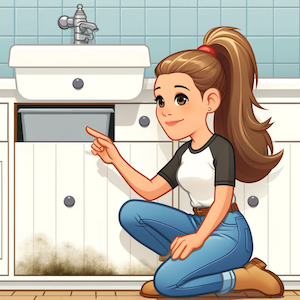Preventing And Addressing Mold Growth In Your Home
Mold growth in your home isn't just unsightly—it can also pose serious health risks and damage to your property. The key to mold prevention lies in controlling moisture levels and ensuring proper ventilation. But what do you do when mold appears despite your best efforts?
Addressing your mold issue quickly is crucial to preventing further spread and structural damage. This article will go over Strategies to Prevent Mold in Your Home, what Immediate Actions to Take if You Discover Mold, how the Professional Mold Remediation Processes works, and Long-Term Solutions and Maintenance Tips.

Proper ventilation is key to prevent mold
Preventing mold in your home is crucial for maintaining a healthy living environment. Start by ensuring proper ventilation, especially in high-moisture areas like bathrooms, kitchens, and laundry rooms. Use exhaust fans or open windows regularly to circulate air and reduce humidity. It's important to keep indoor humidity levels between 30% and 50%—a simple hygrometer can help you monitor these levels effectively.
Identify potential problem areas where mold is likely to grow, such as basements, window sills, and under sinks. Regularly inspect these areas for signs of moisture and address leaks promptly. Using dehumidifiers in damp areas can also help control moisture, significantly reducing the risk of mold growth.
Immediate Actions to Take if You Discover Mold
Discovering mold in your home requires prompt action to mitigate health risks. First, you'll need to equip yourself with gloves and a mask to protect against mold spores. If the mold seems to be caused by a leak or moist area, immediately stop the source of moisture; this could involve fixing leaks, drying out wet areas, or addressing condensation issues.
Next, isolate the affected area to prevent spores from spreading to other parts of the house. Seal off doorways and vents with plastic sheeting and tape. Small mold patches can often be cleaned with a solution of water and detergent, but avoid using bleach as it can cause mold to release more spores.
For mold that covers more than 10 square feet, or if it's in hard-to-reach places like inside walls or air ducts, it's crucial to call a professional. Mold remediation experts have the necessary equipment and expertise to safely remove extensive mold infestations and help prevent future growth.
Are you at risk for mold exposure?
Discover With Our Mold Inspection Necessity Quiz!
Take our quick Mold Inspection Necessity Quiz now and gain the insight you need to protect your health and home!Take the FREE Mold Inspection Necessity Quiz!
How to remediate mold; when to hire a pro.
When mold infestation extends beyond a manageable scope, professional remediation becomes essential to ensure a safe and thorough removal. Professional mold remediation starts with a detailed inspection to identify the extent and type of mold. Experts use specialized equipment to contain and filter the air, preventing spores from spreading during the cleanup.
Choosing a reputable service is crucial; look for certified professionals with good reviews and a solid track record. A reliable company will provide a transparent plan, including safety protocols and post-remediation testing to confirm the mold is completely removed.
Homeowners can expect the process to involve some disruption, as areas will be sealed off and air filtration systems run continuously. Post-remediation, professionals should offer advice on preventing future mold problems, ensuring long-term safety and cleanliness in the home. Trusting experienced specialists is key to effectively resolving mold issues and maintaining a healthy living environment.
Maintenance and vigilance are how you prevent mold
To keep your home mold-free after professional remediation, consistent maintenance and vigilance are key. Regularly inspect your home for signs of moisture, especially in prone areas like basements, attics, and bathrooms. Fix leaks immediately, no matter how small, and ensure that water drainage systems are functioning properly to prevent water accumulation around your home’s foundation.
Maintain optimal indoor humidity, ideally between 30% and 50%, using dehumidifiers and air conditioners. Ventilation is crucial; make use of exhaust fans in kitchens and bathrooms and open windows when weather permits to improve air circulation.
Clean and vacuum regularly to remove potential mold spores before they settle. Finally, consider annual professional inspections as part of your routine home maintenance to catch any potential mold issues early. By adopting these practices, you can significantly reduce the risk of mold recurrence and maintain a healthier living environment.
Conclusion
This article discussed how controlling moisture and ensuring proper ventilation are key to preventing mold growth in homes. It outlined strategies such as using exhaust fans and dehumidifiers, and highlighted the importance of regular inspections in areas prone to moisture.
If mold is discovered in your home or workplace, immediate actions include isolating the area and possibly involving professionals for extensive cases. Long-term solutions involve maintaining humidity levels, enhancing ventilation, and conducting annual professional checks to prevent mold recurrence.